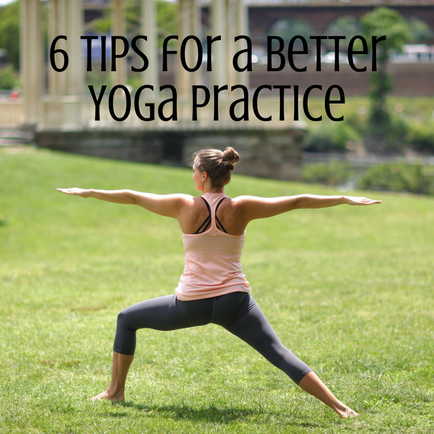|
As a yoga student, you have a lot of choices when it comes to your yoga practice. If you live near a city, you probably have dozens of yoga studios within just a five mile radius. There are various styles of yoga, not to mention thousands of yoga teachers ready to teach you. With so many choices, I find that there are few consistencies among teachers and studios, even within the same lineage. Each teacher has their own unique style and their own preferences, and the same goes for studios. I often receive questions from students along the lines of, "This teacher said to do it this way, but you said to do it that way. Which way is correct?" For that question, I almost always have the same answer, which is that both ways are correct, because usually they are. I encourage students to try whatever their teacher suggests, as long as it doesn't cause pain or put the student at risk for injury. At some point, you'll find the method that's preferable, at which point you can stick with that. When I think about how to be a great yoga student, I don't really think about what shape your body is making while you practice yoga. Instead, I mostly think about how you show up on your mat. I think about how you respect your body and your mind. I think about your ability to be mindful and your ability to breathe. I think about your ability to just show up -- which for most of us, is usually the hardest part. When I think about how to be a great yoga student, here are a few things that I consider "good practices" for ensuring that you have a great yoga experience. 1. Check your ego at the doorWith yoga, there are different levels for most poses. Let's assume that you are practicing yoga in an all levels Vinyasa class, and for the sake of the wide range of abilities in the room, the teacher has offered three different versions of a pose and asks that you stop at the version that feels most appropriate to you. The first version is pretty basic and feels quite simple to you, challenging you only very little. The second version is a bit more challenging, yet you feel like you could stay there relatively comfortably, breathing deeper, while feeling all the benefits the pose has to offer. The third version of the pose seems way above your ability, but you give it a try anyway. When you arrive in the third version, you immediately stop breathing, you feel intense pain in your body, and you feel like you might have a panic attack. The face you are making resembles a baby's "pooping face" -- you know the one: eyes closed, clenched jaw, pursed lips. You convince yourself to stay, because yoga should be painful, right? Your ego convinced you to stay in the third version of the pose. Maybe because you felt embarrassed to leave the pose early. Or perhaps because you ignored your own intuition. There are other types of students who practice not with ego, but with fear. They also ignore their intuition because they often find themselves feeling afraid to try new things, lacking the ability to acknowledge the fear that exists inside themselves. This type of person might be stuck in version one of the pose when they may actually belong in version two or three. Practice with teachers that you trust so that when your teacher tells you to back off a bit or to embrace something more challenging, you listen because you believe they know what is best for you. Trust your teacher, but more importantly, trust yourself. Don't ignore your intuition.
2. Be aware & respectful to your surroundings
3. Be mindful about time
4. Communicate with your teacher
5. Disconnect & detach
6. Make only one assumption
I'd love to know: what's important to you when you practice? Are my tips helpful? Did I miss something? Share your thoughts in the comments below!
1 Comment
|
CategoriesArchives
June 2023
|

 RSS Feed
RSS Feed